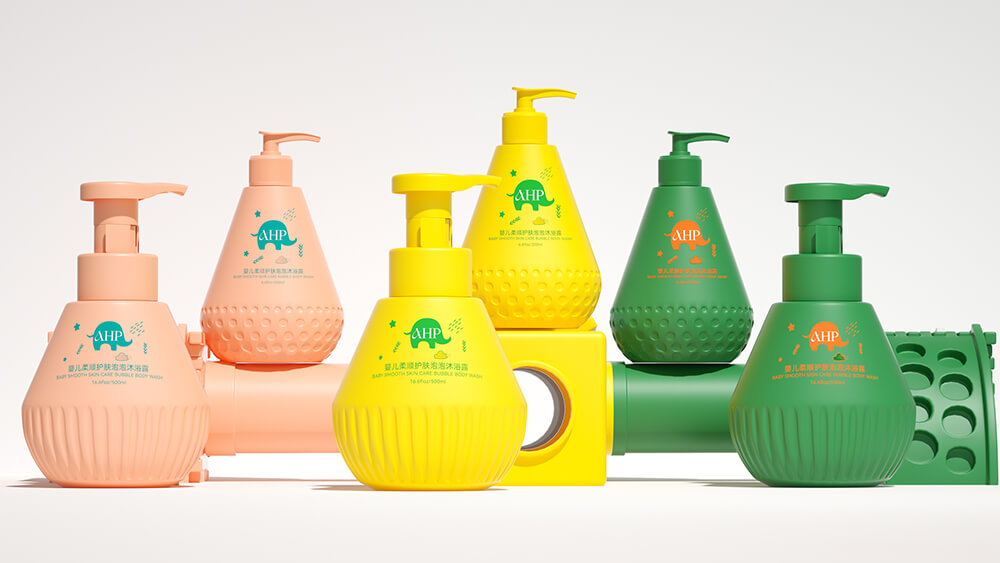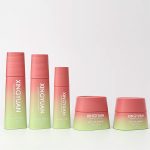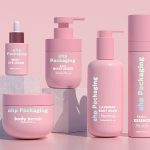Screen printing, also known as silk screen printing, is a versatile printing technique that has found extensive application in various industries. In the realm of cosmetic packaging, screen printing plays a crucial role in enhancing the visual appeal and branding of products. By employing this method, cosmetic companies can create stunning designs and vibrant patterns on different packaging materials, including glass, plastic, and metal.
The primary objective of screen printing in cosmetic packaging is to capture consumers’ attention and convey a sense of luxury and sophistication. This article aims to explore the application of screen printing specifically in the realm of cosmetic packaging, delving into its benefits, techniques, case studies, and future prospects.
Screen printing involves transferring ink onto a substrate through a mesh screen, selectively blocking certain areas to create the desired design. It allows for intricate details and vibrant colors, making it an ideal choice for cosmetic packaging, where aesthetics play a crucial role in attracting customers. From elegant logos on glass perfume bottles to vibrant patterns on plastic cosmetic tubes, screen printing offers limitless possibilities for cosmetic brands to differentiate their products and leave a lasting impression.
Moreover, screen printing provides customization options for branding purposes. Cosmetic companies can incorporate their unique logos, product names, and intricate designs on packaging, reinforcing brand recognition and establishing a strong visual identity. This personalization not only helps consumers identify and connect with specific products but also adds a touch of exclusivity, making the packaging feel special and luxurious.
Another advantage of screen printing in cosmetic packaging is its durability and longevity. The ink used in the process is designed to withstand various environmental factors, such as moisture and friction, ensuring that the printed designs remain intact throughout the product’s lifecycle. This longevity contributes to the overall aesthetic appeal and reinforces the premium image of the brand.
Furthermore, screen printing is a versatile technique that can be applied to a wide range of packaging materials. Whether it is glass bottles, plastic containers, or metal tins, screen printing can adapt to different surfaces, offering cosmetic companies the flexibility to explore various packaging options. It enables them to create cohesive packaging designs across multiple product lines, enhancing brand consistency and recognition.
Outline
- 1 Understanding Screen Printing
- 2 Benefits of Screen Printing in Cosmetic Packaging
- 3 Application of Screen Printing in Cosmetic Packaging
- 4 Techniques and Considerations in Screen Printing for Cosmetic Packaging
- 5 Case Studies: Successful Implementations of Screen Printing in Cosmetic Packaging
- 6 Future Trends and Innovations in Screen Printing for Cosmetic Packaging
- 7 Conclusion:
Understanding Screen Printing
Screen printing is a printing technique that involves transferring ink onto a substrate through a fine mesh screen. This method allows for precise and detailed designs to be printed on various materials, including paper, fabric, glass, plastic, and metal. Understanding the key components and process of screen printing is essential to grasp its application in cosmetic packaging.
A. Definition and Process of Screen Printing:
Screen printing, also known as serigraphy or silk screening, originated in ancient China and has evolved into a widely used printing method today. The process begins with a mesh screen, traditionally made of silk but now commonly composed of polyester or nylon. This screen acts as a stencil through which ink is pushed onto the substrate.
The screen printing process involves the following steps:
- Screen Preparation: The screen is prepared by coating it with a light-sensitive emulsion. This emulsion is exposed to UV light through a positive image or artwork, hardening the exposed areas and leaving the unexposed areas soluble.
- Image Preparation: The desired design or artwork is created on a transparent film or a digitally generated image. This image is used to create the stencil on the screen.
- Stencil Creation: The prepared screen is placed on a printing press or a frame. The image or artwork is then transferred onto the screen using various methods like direct drawing, photo emulsion, or digital image transfer.
- Ink Application: The screen is positioned over the substrate, and ink is poured onto one end of the screen. A squeegee is then used to spread the ink across the screen, forcing it through the open mesh and onto the substrate. The ink passes through the areas that are not blocked by the stencil, resulting in the desired design on the substrate.
- Drying and Curing: After the ink is applied, the substrate is typically heated or air-dried to ensure proper adhesion and longevity of the print. In some cases, additional curing processes, such as heat curing or UV curing, may be employed to enhance the durability and resistance of the printed design.
B. Key Components Involved in Screen Printing:
- Screen: The mesh screen is a critical component of screen printing. Its mesh count determines the level of detail that can be achieved in the printed design. A higher mesh count allows for finer details, while a lower mesh count is suitable for bold and larger designs.
- Ink: Various types of inks can be used in screen printing, including solvent-based, water-based, and UV-curable inks. The choice of ink depends on the substrate material, desired effect, and specific requirements of the cosmetic packaging.
- Squeegee: The squeegee is a rubber or polyurethane blade used to push the ink through the mesh screen onto the substrate. It ensures consistent pressure and even distribution of the ink, resulting in a smooth and uniform print.
- Substrate: The substrate refers to the material onto which the design is printed. In cosmetic packaging, substrates can include glass bottles, plastic containers, metal tins, and labels. Each substrate requires specific considerations for ink adhesion and curing.
Understanding the process and components of screen printing is crucial for cosmetic companies to effectively utilize this technique in their packaging design.
Benefits of Screen Printing in Cosmetic Packaging
Screen printing offers numerous benefits when applied to cosmetic packaging, making it a preferred choice for many brands. Let’s explore some of the key advantages this technique provides:
A. Enhanced Visual Appeal:
Screen printing allows for intricate and detailed designs, resulting in visually stunning packaging. The fine mesh screen enables precise ink placement, capturing the smallest details and producing high-resolution prints. Whether it’s delicate floral patterns, intricate logos, or vibrant graphics, screen printing ensures a visually appealing finish that catches the eye of consumers.
B. Customization Options for Branding:
Cosmetic brands rely on strong branding to establish a distinctive identity and connect with their target audience. Screen printing offers extensive customization options, allowing brands to incorporate their unique logos, product names, and artwork on packaging. This personalization reinforces brand recognition and creates a cohesive visual language, distinguishing the brand from competitors and enhancing its market presence.
C. Long-lasting and Durable Prints:
Cosmetic packaging is subjected to various handling and environmental factors, such as transport, storage, and regular usage. Screen printing utilizes specially formulated inks that adhere strongly to the substrate, resulting in prints that are resistant to fading, scratching, and rubbing off. The durability of screen-printed designs ensures that the packaging maintains its aesthetic appeal and brand messaging throughout the product’s lifespan.
D. Versatility in Printing on Various Materials:
Cosmetic products come in a wide range of packaging materials, including glass, plastic, and metal. Screen printing offers versatility in printing on these diverse substrates. It can adhere to different surfaces, adapting to the unique properties of each material. Whether it’s a sleek glass bottle, a flexible plastic tube, or a metallic compact, screen printing can deliver high-quality prints on various surfaces, maintaining consistency across different packaging formats.
E. Environmentally Friendly:
In recent years, sustainability has become a key focus for many industries, including cosmetics. Screen printing aligns with sustainable practices as it utilizes eco-friendly water-based inks, reducing the environmental impact. Additionally, screen printing produces minimal waste, as screens can be reused multiple times, and excess ink can be collected and recycled. This eco-conscious approach helps cosmetic brands meet their sustainability goals and appeal to environmentally conscious consumers.
F. Cost-effective for Large Production Runs:
Screen printing is an economical choice for large production runs of cosmetic packaging. Once the screens and stencils are prepared, the process can be easily replicated, allowing for efficient and cost-effective printing of a high volume of packages. This advantage makes screen printing particularly attractive for established cosmetic brands and manufacturers who require mass production without compromising quality.
Application of Screen Printing in Cosmetic Packaging
Screen printing finds wide-ranging applications in cosmetic packaging, offering opportunities for creative and impactful designs. Let’s delve into some specific areas where screen printing is commonly utilized:
A. Printing on Glass Bottles and Jars:
Glass bottles and jars are often preferred for high-end cosmetic products due to their luxurious and premium appeal. Screen printing on glass surfaces allows brands to showcase intricate designs, logos, and text, enhancing the visual appeal of the packaging. From elegant typography to ornate patterns, screen printing brings sophistication and elegance to glass packaging, capturing consumers’ attention and conveying a sense of luxury.
B. Decorating Plastic Tubes and Containers:
Plastic tubes and containers are widely used for a variety of cosmetic products, including creams, lotions, and lip balms. Screen printing on plastic surfaces provides an opportunity to create vibrant and eye-catching designs. Whether it’s a gradient effect, bold graphics, or intricate illustrations, screen printing enables brands to customize plastic packaging with precision and creativity, making their products stand out on store shelves.
C. Printing on Metal Tins and Compacts:
Metal tins and compacts are often used for cosmetic products such as powders, blushes, and eyeshadows. Screen printing on metal surfaces allows for elegant and durable designs. Brands can incorporate metallic inks, embossed effects, and foil accents to add a touch of sophistication to their packaging. The combination of screen printing and metal substrates offers a luxurious and premium aesthetic that appeals to discerning consumers.
D. Incorporating Screen Printing in Labels and Stickers:
Labels and stickers play a vital role in cosmetic packaging, providing product information and branding elements. Screen printing allows for high-quality prints on labels and stickers, enabling brands to create cohesive designs that align with the overall packaging concept. From logo placement to intricate patterns, screen printing ensures sharp and durable prints on these adhesive elements, enhancing the visual appeal of the product packaging.
Techniques and Considerations in Screen Printing for Cosmetic Packaging
Screen printing for cosmetic packaging requires careful attention to various techniques and considerations to ensure high-quality and impactful results. Let’s explore some key factors to consider when utilizing screen printing in cosmetic packaging:
A. Selection of Appropriate Inks and Colors:
Choosing the right type of ink is essential for achieving desired results in screen printing. Different inks, such as solvent-based, water-based, or UV-curable inks, offer varying characteristics in terms of color vibrancy, drying time, and adhesion to different substrates. It’s important to select inks that are specifically formulated for the material of the packaging, ensuring durability, resistance to fading, and compatibility with the overall design concept.
Color selection is also crucial in screen printing. Brands must consider their target audience, branding guidelines, and the visual impact they want to create. Vibrant and bold colors can grab attention, while subtle and sophisticated tones can convey elegance. Conducting color tests and considering the psychological impact of different colors can help in choosing the most effective color palette for the packaging design.
B. Preparing Artwork and Screens:
The quality of the artwork and screens used in screen printing significantly impacts the final result. Artwork should be created in high resolution, ensuring clear and precise details for printing. It’s essential to work with experienced graphic designers who understand the technical requirements of screen printing and can optimize the artwork accordingly.
Preparing screens involves applying a light-sensitive emulsion and transferring the desired image onto the screen. Care must be taken to ensure proper exposure, adequate stencil thickness, and accurate registration of multiple colors if applicable. Regular maintenance and cleaning of screens are essential to maintain print quality and prevent any defects or blockages.
C. Printing Techniques for Different Materials:
Cosmetic packaging materials, such as glass, plastic, and metal, require specific printing techniques to achieve optimal results:
- Glass Printing: Glass surfaces should be thoroughly cleaned to ensure proper ink adhesion. Specialized inks, such as ceramic or enamel-based inks, are commonly used for glass printing. Techniques like spot printing and gradient effects can be employed to create captivating designs on glass bottles and jars.
- Plastic Printing: Plastic surfaces may require pre-treatment, such as flame treatment or corona treatment, to enhance ink adhesion. It’s crucial to select inks that are compatible with the specific type of plastic to ensure durability. Printing techniques like halftone printing and special effects, such as gloss or matte finishes, can be utilized to create visually appealing designs on plastic packaging.
- Metal Printing: Metal surfaces often require pre-treatment, such as priming or chemical etching, to promote ink adhesion. Metallic inks and special effects, such as metallic foils or embossing, can be employed to enhance the luxurious appeal of metal tins and compacts.
D. Quality Control and Troubleshooting Tips:
Maintaining quality control throughout the screen printing process is essential to ensure consistent and high-quality prints. Regularly checking for issues like ink smudging, inconsistent ink coverage, or registration errors is crucial. Conducting print tests, monitoring color accuracy, and performing regular inspections during production can help identify and address any potential issues promptly.
Troubleshooting tips for common screen printing issues include adjusting squeegee pressure, checking screen tension, optimizing ink viscosity, and ensuring proper curing and drying processes. Experienced printers and technicians can provide valuable insights and guidance in troubleshooting and resolving any printing challenges.
Case Studies: Successful Implementations of Screen Printing in Cosmetic Packaging
Screen printing has been widely adopted by cosmetic brands to create stunning packaging designs that captivate consumers and differentiate their products. Let’s explore some successful case studies that highlight the effective implementation of screen printing in cosmetic packaging:
A. Case Study 1: Luxury Perfume Brand
A renowned luxury perfume brand incorporated screen printing on its glass perfume bottles to create a visual masterpiece. The brand utilized high-resolution screen printing techniques to achieve intricate floral patterns and intricate logo placements on the bottles. The screen printing process allowed for precise color reproduction and excellent adhesion, resulting in a sophisticated and captivating design. The combination of vibrant colors, elegant typography, and meticulous details elevated the brand’s packaging, establishing a strong visual identity and enhancing the overall brand experience.
B. Case Study 2: Organic Skincare Line
An organic skincare line embraced screen printing to showcase its commitment to sustainability and natural ingredients. The brand opted for water-based inks and recyclable packaging materials. By incorporating screen printing on their plastic tubes and containers, they were able to print eye-catching designs with vibrant colors. The brand utilized a combination of bold typography, botanical illustrations, and subtle gradients to create an organic and fresh visual aesthetic. The screen printing technique enhanced the packaging’s appeal, aligning it with the brand’s eco-conscious values and resonating with environmentally aware consumers.
C. Case Study 3: Makeup Brand
A makeup brand implemented screen printing on its metal compacts to achieve a luxurious and premium look. The brand utilized metallic inks and special effects to create captivating designs on the compact lids. By employing screen printing, they were able to add foil accents, embossed elements, and intricate patterns to their packaging. The combination of metallic finishes and precise detailing resulted in a sophisticated and glamorous packaging design that conveyed a sense of exclusivity and allure. The screen-printed metal compacts became a signature feature of the brand, creating a strong visual impact and enhancing brand recognition.
These case studies demonstrate the versatility and impact of screen printing in cosmetic packaging. By leveraging this technique, brands can create visually stunning designs, reinforce their brand identity, and leave a lasting impression on consumers.
Future Trends and Innovations in Screen Printing for Cosmetic Packaging
The field of screen printing for cosmetic packaging continues to evolve, with advancements and innovations driving new trends. Let’s explore some of the future trends and emerging technologies that are shaping the landscape of screen printing in the cosmetic industry:
A. Digital Printing:
Digital printing technologies are gaining popularity in the screen printing realm. Advanced digital printers allow for direct printing onto various packaging materials, eliminating the need for screens and stencils. This technology enables faster production turnaround, greater design flexibility, and the ability to create highly intricate and detailed prints. Digital printing also offers advantages in terms of color accuracy, customization, and cost-effectiveness for smaller production runs.
B. Specialty Inks and Finishes:
As cosmetic brands seek unique and eye-catching packaging, specialty inks and finishes are becoming increasingly prevalent in screen printing. Metallic inks, glow-in-the-dark inks, and iridescent inks are being utilized to create captivating effects and enhance the visual appeal of packaging. Additionally, specialty finishes such as spot gloss, matte coatings, and textured varnishes add tactile elements, elevating the overall sensory experience and reinforcing brand differentiation.
C. Sustainability and Eco-Friendly Practices:
The focus on sustainability and eco-consciousness is driving innovations in screen printing for cosmetic packaging. Water-based inks, which have minimal environmental impact, are being preferred over solvent-based alternatives. Biodegradable and compostable packaging materials are gaining traction, and screen printing is adapting to these substrates by utilizing eco-friendly ink systems. Furthermore, recycling and upcycling initiatives are being explored to minimize waste and promote circularity in the production and disposal of packaging.
D. Automation and Robotics:
Automation and robotics are revolutionizing the screen printing process, making it more efficient and precise. Robotic systems can handle repetitive tasks such as screen preparation, ink application, and quality control, reducing human errors and increasing production speed. Automated screen registration systems ensure accurate alignment, resulting in consistent and flawless prints. These advancements not only enhance productivity but also offer cost savings and improved quality control.
E. Smart Packaging Integration:
With the rise of smart packaging technologies, screen printing is being combined with electronic components to create interactive and functional packaging. Printed sensors, NFC tags, and QR codes can be seamlessly integrated into the design, enabling consumers to access additional product information, tutorials, or promotions through their smartphones. This integration of screen printing with smart packaging enhances consumer engagement, provides valuable data analytics, and opens up new marketing opportunities for cosmetic brands.
These future trends and innovations in screen printing for cosmetic packaging are poised to shape the industry in exciting ways. By embracing these advancements, cosmetic brands can stay at the forefront of packaging design, deliver unique consumer experiences, and contribute to a more sustainable future.
Conclusion:
Screen printing has emerged as a powerful tool in the world of cosmetic packaging, enabling brands to create visually striking designs and convey their unique identities. Its benefits, such as enhanced visual appeal, customization options, durability, and versatility, have made it a popular choice for cosmetic companies seeking to captivate consumers and differentiate their products.
As the industry evolves, future trends like digital printing, specialty inks, sustainability practices, automation, and smart packaging integration are shaping the landscape of screen printing. These advancements offer exciting opportunities for innovative and eco-conscious packaging solutions.
By harnessing the potential of screen printing and embracing emerging technologies, cosmetic brands can elevate their packaging, engage consumers on a deeper level, and leave a lasting impression. With creativity, technical expertise, and a commitment to sustainability, screen printing will continue to play a pivotal role in cosmetic packaging, shaping the industry’s future.





